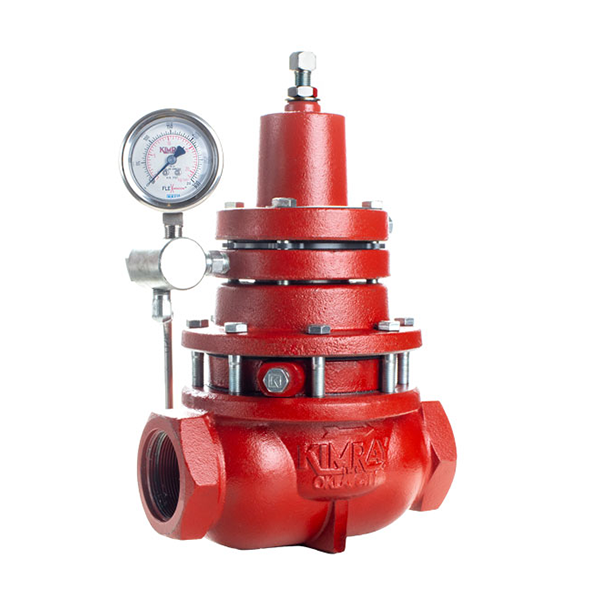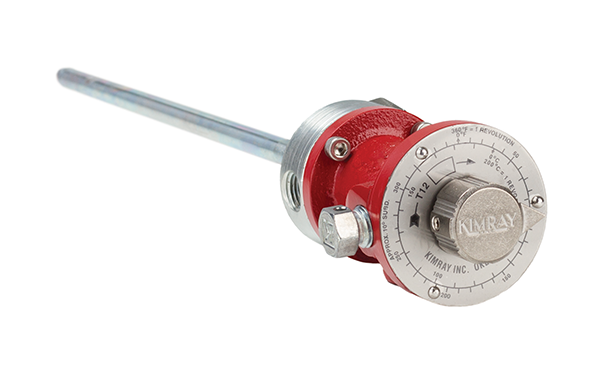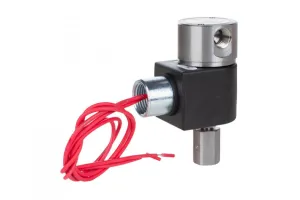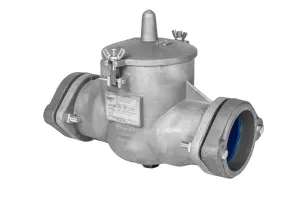
Many upstream oil and gas producers are looking for ways to manage and ultimately decrease the natural gas emissions on their well sites.
In this blog, we’ll help you identify 5 products may be emitting and offer some simple steps you can take to convert them to ZERO emission.
5 Products that intermittently Emit natural gas During Normal Operation
Specifically, we'll look at these 5 products:
- Back Pressure Regulators
- Pressure Reducing Regulators
- Pressure Pilots
- Liquid Level Controllers
- Temperature Controllers
how to eliminate emissions from a Back Pressure Regulator

What is a Back Pressure Regulator?
A Back Pressure Regulator holds pressure on a production vessel to provide the push that dumps fluid out after it is separated. It is commonly used on may types of separation vessels.
Where does it emit?
A back pressure regulator intermittently emits natural gas as the valve opens during normal operation. While it does not continuously emit, this may be a process you want to consider addressing. The regulator emits at a vent port.
How can I reduce or eliminate emissions from this process?
To eliminate emissions from the back pressure process, you have two options:
- Use a Non-Vent Regulator
A non-vent version of the regulator uses supply gas to actuate, then sends the gas to the downstream side of the valve so it re-enters the production fluid.
- Use a Back Pressure Regulator with Outside Supply, operated with liquid nitrogen or compressed air
The outside supply version of the regulator can be tubed to Kathairos liquid nitrogen tank rather than the valve body. It then uses zero-emission nitrogen to actuate and vents the that rather than natural gas.
Either option can be purchased new, or you can easily convert an existing regulator to either operation with a few parts. For the conversion process, follow our step-by-step videos below.
Watch: How to Convert a Back Pressure Regulator to Non-Vent
Watch: How to Convert a Back Pressure Regulator to Outside Supply
How to Eliminate Emissions from a Pressure Reducing Regulator

What is a Pressure Reducing Regulator?
A Pressure Reducing Regulator regulates the flow of gas by creating and holding a set point downstream of the regulator. It is most commonly used as a suction controller on natural gas compressors.
Where does it emit?
A pressure reducing regulator intermittently emits natural gas as the valve opens during normal operation. While it does not continuously emit, this may be a process you want to consider addressing. The regulator emits at a vent port.
How can I reduce or eliminate emissions from this process?
To eliminate emissions from the pressure reducing process, you have two options:
- Use a Non-Vent Pressure Reducing Regulator
A non-vent version of the regulator uses supply gas to actuate, then sends the gas to the downstream side of the valve so it re-enters the production fluid.
- Use a Pressure Reducing Regulator with Outside Supply, operated with liquid nitrogen or compressed air
The outside supply version of the regulator can be tubed to a Kathairos nitrogen tank rather the valve body. gas. It then uses zero-emission nitrogen to actuate and vents that rather than natural gas.
Either option can be purchased new, or you can easily convert an existing regulator to either operation with a few parts. For the conversion process, follow our step-by-step videos below.
Watch: How to Convert a Pressure Reducing Regulator to Non-Vent
Watch: How to Convert a Pressure Reducing Regulator to Outside Supply
How to Eliminate Emissions from a Pressure Pilot

What is a Pressure Pilot?
A Pressure Pilot is used to supply instrument gas to a High Pressure Control Valve, which allows it to open and close.
Where does it emit?
The pressure pilot intermittently emits natural gas during normal operation. While it does not continuously emit, this may be a process you want to consider addressing. The pilot emits at the vent port.
How can I reduce or eliminate emissions from this process?
To eliminate emissions from the pilot, use liquid nitrogen or compressed air rather than natural gas for the supply.
how to eliminate emissions from a Liquid Level Controller

What is a Pneumatic Liquid Level Controller?
A Pneumatic Liquid Level Controller senses liquid levels inside an oil and gas production vessel and works in conjunction with a control valve to send fluid downstream and control the level.
Where does it emit?
A liquid level controller intermittently emits natural gas during normal operation as supply gas from the valve is routed back to the controller and out to atmosphere. While it does not continuously emit, this may be a process you want to consider addressing. The controller emits at the vent ports.
How can I reduce or eliminate emissions from this process?
To eliminate emissions from the back pressure process, you have two options:
- Route the vent gas to a VRU
Tube the vent line of the level controller to send gas to a VRU or gas gathering system
- Use liquid nitrogen or compressed air
Tube the supply line to a Kathairos nitrogen tank rather than gas. It then uses zero-emission nitrogen to actuate and vents the that rather than natural gas.
how to eliminate emissions from a Temperature Controller

What is a Temperature Controller?
Producers use a Temperature Controller to control a set temperature in production vessels like heater treaters, reboilers, and heat exchangers.
Where does it emit?
The temperature controller intermittently emits natural gas during normal operation. While it does not continuously emit, and the amount is very minimal, this may be a process you want to consider addressing. The controller emits at a vent port.
How can I reduce or eliminate emissions from this process?
Tube the vent line of the temperature controller to send gas to a VRU or gas gathering system.
Kimray is committed to helping you achieve the greatest value out of your production sites while lowering your methane emissions.
Contact us today to explore our project consultation and training opportunities that can move your further along in your emissions management.








































